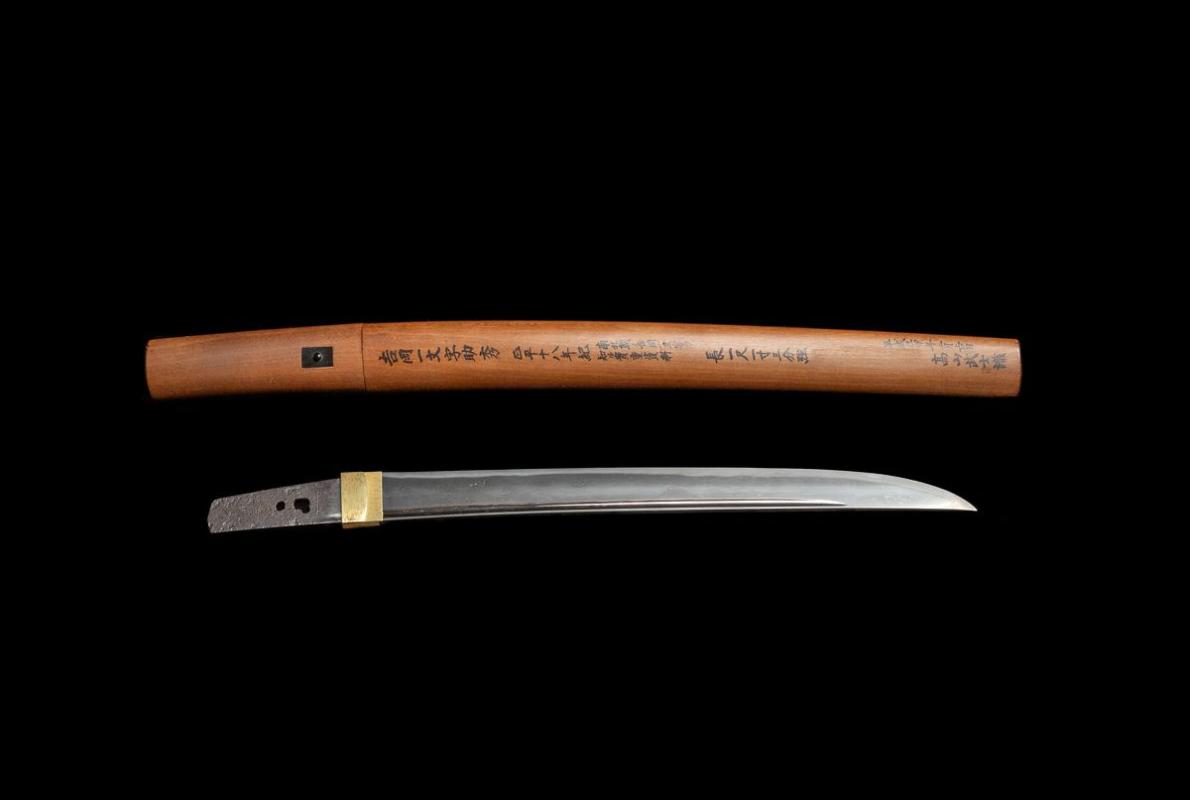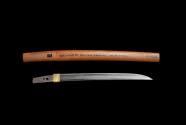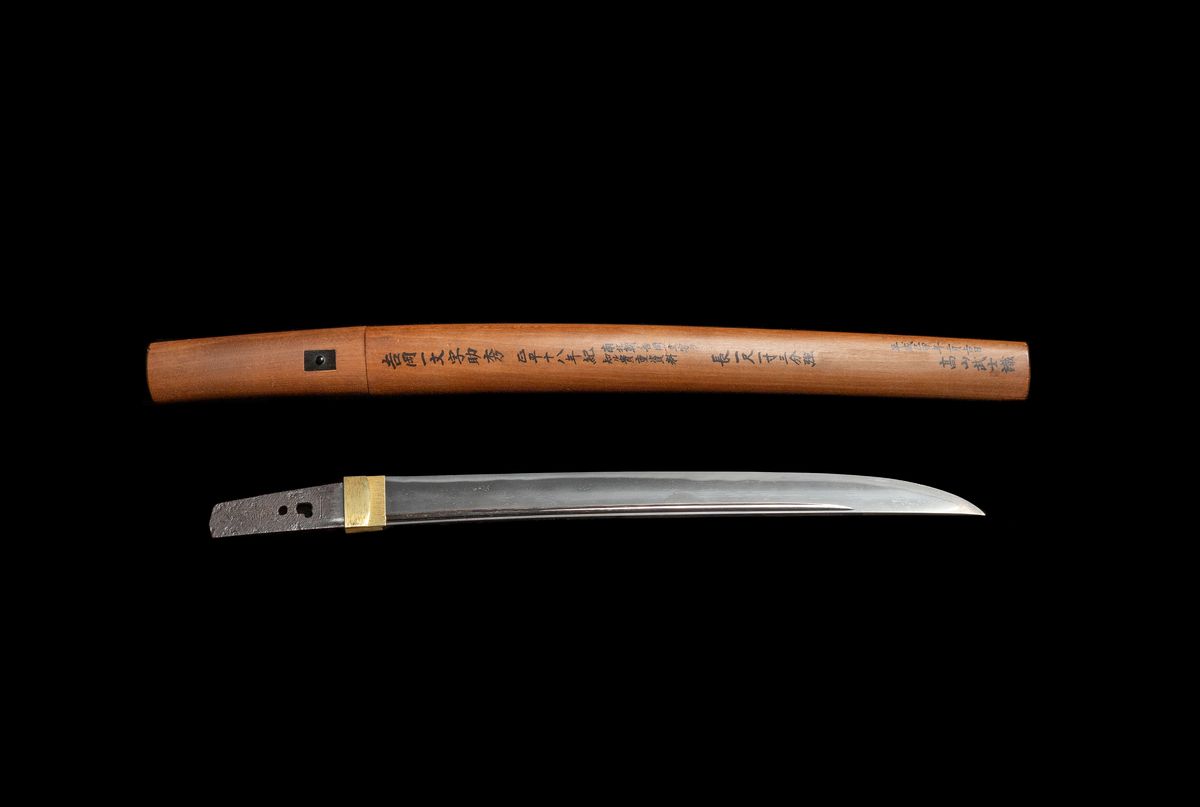Wakizashi (Short Sword), Jūyo Token
Artist:
Yoshioka Ichimonji Sukehide
(Japanese)
Place made:Japan
General region:Asia
Culture: Japanese
Period: Nambokucho era (1336-1392)
Date: July, 1363
Medium: Steel
Dimensions:
13 3/4 in. (35 cm)
Credit Line: San Antonio Museum of Art, acquired in memory of Dr. Robert R. Clemons with funds realized from his estate
Object number: 2022.11.1
Markings: Yoshioka Ichimonji Sukehide
Provenance: Private collection, Japan, 1937 [note 1]. Sold by Tamayama Masatoshi, Kyoto, to Fred Weissberg, Monterey, 2016; sold by Fred Weissberg, Monterey, to San Antonio Museum of Art, 2022.
Note 1: published in Kanto Zuikoku (Notes on Swords), by Kaigun Taisa & Kisuki Hisao, 1937.
Published References
Nihonto Koza, Vol. IX, Yuzankaku Shuppan, Ltd. Tokyo, 1968, translated by Harry Watson, 1994
Kanto Zuikoku (Notes on Swords), by Kaigun Taisa & Kisuki Hisao, 1937
Nihon Toko Jiten, by Fujishiro, 1990
The Umetada Meikan, by Honami Kohaku, 1968
Bizen Ichimonji Tradition, published by the Sano Art Museum, 2007
Label Text
A wakizashi is a short sword with blade 12-24 inches (30-60 cm) in length. It was usually worn with a katana, or full-length sword, as a backup or auxiliary sword for fighting at close quarters. The name of the smith, Sukehide, and date of manufacture are carved on the tang—the portion of the blade that forms the sword handle.
Sukehide was a smith from the Yoshioka Ichimonji school centered in the iron-rich Bizen province—an area that is now Okayama Prefecture—during the Kamakura period (1192–1332). The Nihon Bijutsu Tōken Hozon Kyōkai, the oldest Japanese sword appraising organization in Japan, ranked this wakizashi as a Jūyo Token, or Important Sword, based on its age, authenticity, and artistic quality.
Sukehide was a smith from the Yoshioka Ichimonji school centered in the iron-rich Bizen province—an area that is now Okayama Prefecture—during the Kamakura period (1192–1332). The Nihon Bijutsu Tōken Hozon Kyōkai, the oldest Japanese sword appraising organization in Japan, ranked this wakizashi as a Jūyo Token, or Important Sword, based on its age, authenticity, and artistic quality.
On view
In Collection(s)
The San Antonio Museum of Art is in the process of digitizing its permanent collection. This electronic record was created from historic documentation that does not necessarily reflect SAMA's complete or current knowledge about the object. Review and updating of such records is ongoing.




 This resource has been made possible in part by the National Endowment for the Humanities: Exploring the Human Endeavor.
This resource has been made possible in part by the National Endowment for the Humanities: Exploring the Human Endeavor.
